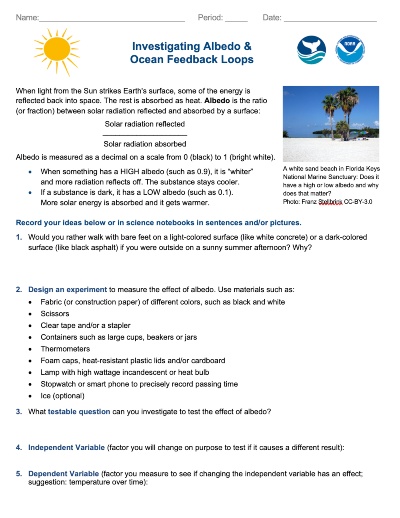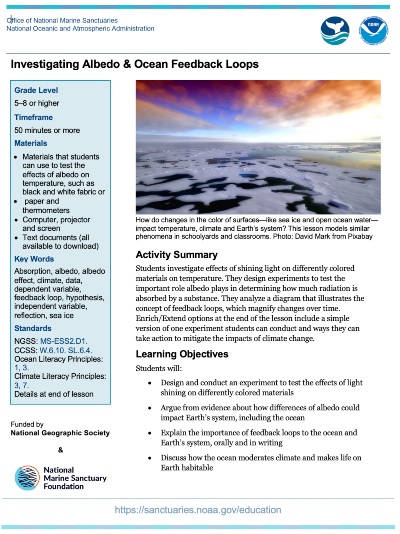Exploring Ocean Mysteries is a curriculum that makes it easy to teach the seven Ocean Literacy Principles while meeting NGSS, Common Core and Climate Literacy standards. Lessons are targeted to middle grades and adaptable for grades 4-12. They use the National Marine Sanctuary System as an engaging backdrop that helps students understand their importance for exploration, research, Indigenous cultures and more.
Ocean Literacy Essential Principle 3: The ocean is a major influence on weather and climate.
In the Investigating Albedo & Ocean Feedback Loops lesson, students investigate effects of shining light on differently colored materials on temperature. They design experiments to test the important role albedo plays in determining how much radiation is absorbed by a substance. They analyze a diagram that illustrates the concept of feedback loops, which magnify changes over time. Enrich/Extend options at the end of the lesson include a simple version of one experiment students can conduct and ways they can take action to mitigate the impacts of climate change.
Lesson Plan
Students will:
- Design and conduct an experiment to test the effects of light shining on differently colored materials.
- Argue from evidence about how differences of albedo could impact Earth’s system, including the ocean.
- Explain the importance of feedback loops to the ocean and Earth’s system, orally and in writing.
- Discuss how the ocean moderates climate and makes life on Earth habitable.
When light from the Sun strikes Earth's surface, some of the energy is reflected back into space. The rest is absorbed as heat. Albedo is the ratio (or fraction) between solar radiation reflected and absorbed by a surface. Print copies of the “Investigating Albedo & Ocean Feedback Loops” handout for each student, or distribute it electronically.



